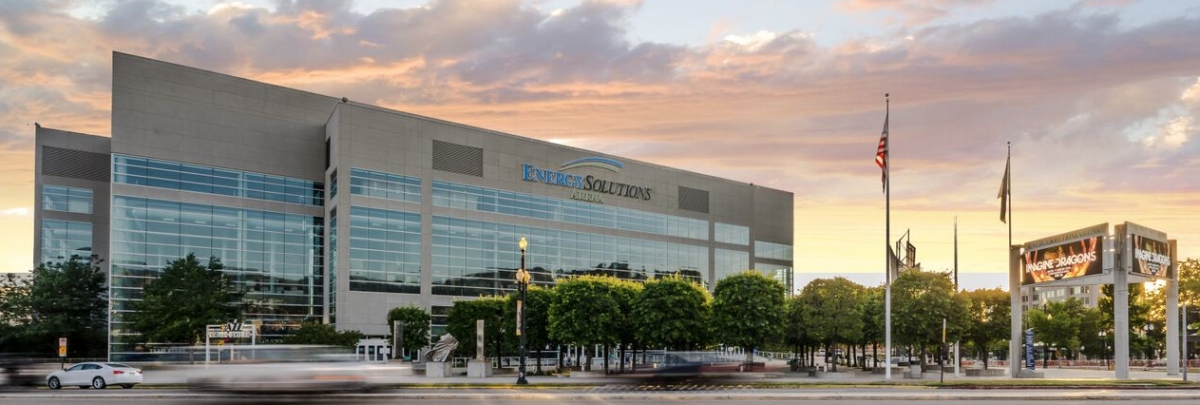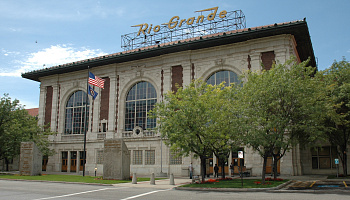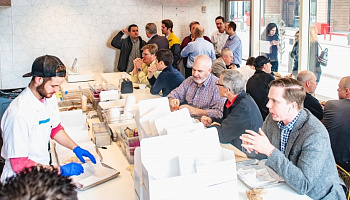Whether you are a fan of country music, basketball, pop divas, big truck shows or family friendly spectacles, downtown Salt Lake City has a gathering place. More than 1.8 million people annually find the best in sports and entertainment at EnergySolutions Arena, which began construction 25 years ago as the most high-tech, state-of-the-art arena in a five-state region. But after a quarter of a century the venue is showing a little gray hair, and owners of the arena – the Larry H. Miller Group of Companies – are taking steps to ensure its world-class status and its desire to continue serving the community.
“The bones of this building are really strong,” says Steve Starks, president of Miller Sports & Entertainment. “It’s timeless in a way because the arena has been so well taken care of through the years. However, it is also time to explore options on how to invest in a type of facility that could house a championship-caliber team and provide best-in-class guest experiences. We have had moments of brilliance occur in the arena, but there are more memories to be made here.”
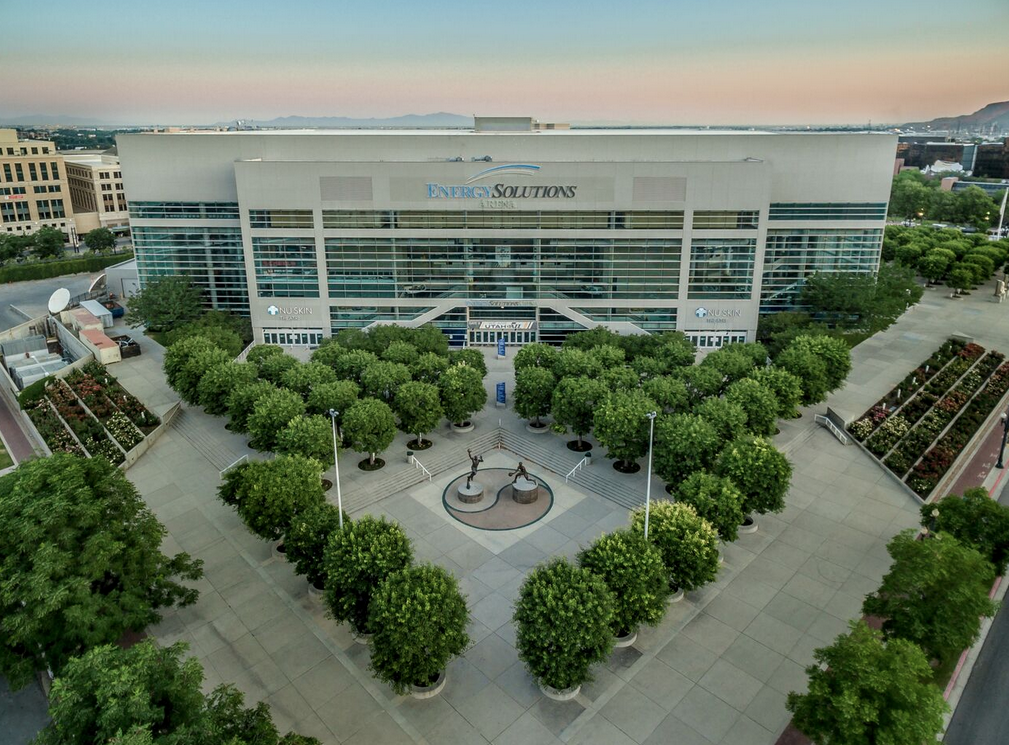
As the home of the Utah Jazz, the downtown arena has been the professional sports heartbeat of the community. Its emergence along West Temple has anchored an integral city hub, spawning new businesses, restaurants, hotels and shopping, light-rail connectors, and a complementary facility to the convention center. Its rising a quarter of a century ago to a gathering place for first-class entertainment in Utah was an act of personal sheer will.
By the summer of 1990, Larry and Gail Miller knew that purchasing the NBA’s Utah Jazz wasn’t enough to keep the team in the state. At the time, they were playing in the now defunct Salt Palace arena, which seated just more than 12,000 spectators. From conversations with former NBA Commissioner David Stern, the Millers knew that they needed a 20,000-seat arena with luxury suites to keep their small market team afloat.
In typical Miller fashion, Larry and Gail had a vision; one that no one believed could come to fruition, but with Larry’s relentless drive, they powered on. Larry and Gail rarely did things just for themselves; they usually had a broader vision in mind. They decided that they would go after an undeveloped, dilapidated block on what was then the far west side of downtown and work with the city’s redevelopment agency to bring a brand new, multi-use, 20,000-seat arena to Salt Lake City ahead of its time. They knew, that if they built it, Jazz fans, events, concerts and crowds would come.
“Larry and Gail always believed in giving back to the community,” said Larry H. Miller Group of Companies CEO, Clark Whitworth. “Putting together the financing for the arena was one of the hardest deals we ever did in our more than 20 years of working together. We learned a lot. If not for Larry’s pure passion for the project, Gail’s unwavering support, and what the project could do for this community, I’m not sure we could have pulled it off.”
By May of 1990, the Millers had secured the approvals and funds to build the arena. Their desire was to have the doors open for the first game of the 1991-92 Jazz season. This left only 15 months to build a nearly the venue. Because of this, the facility was being designed as it was being built, in phases.
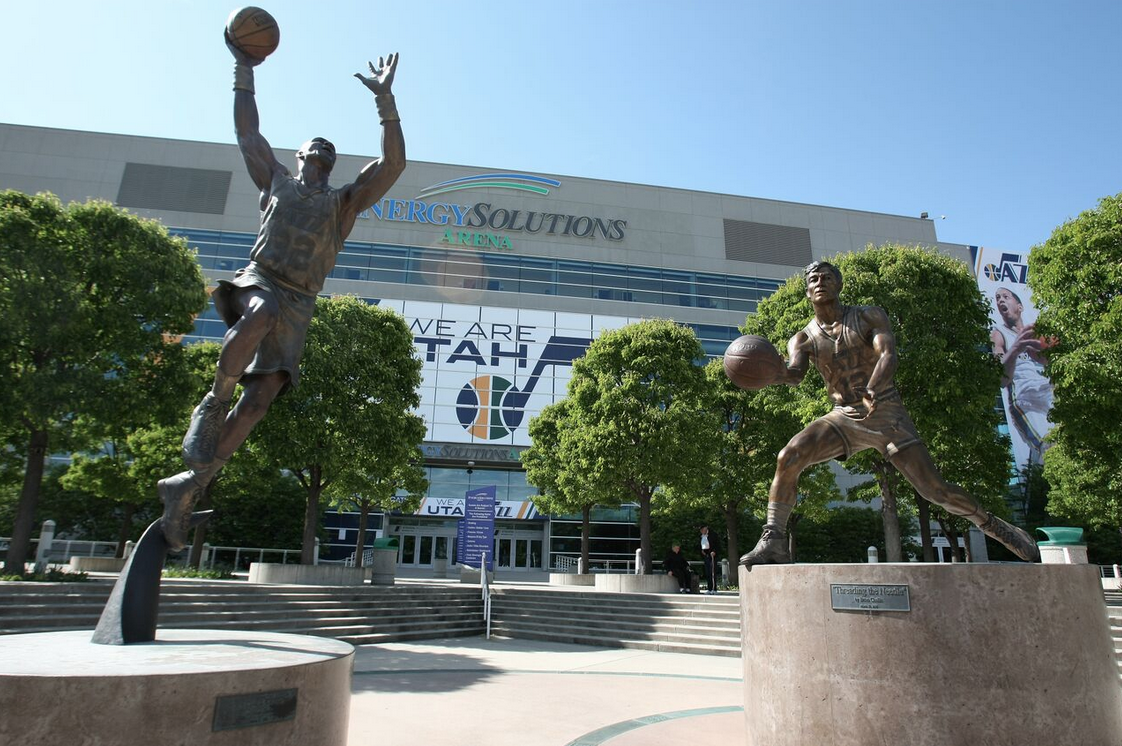
At the time, they also owned the International Hockey League’s Salt Lake Golden Eagles. The Eagles game against the Peoria Rivermen on Oct. 16, 1991 was the first public event hosted in the brand-new arena. The first headliner concert to play the location was Oingo Boingo on Oct. 24, 1991.
Mark Powell, vice president of events and general manager for the venue, recalls, “We opened the doors to the arena in October of 1991 to a sold-out Oingo Boingo concert. Since then, the facility has hosted nearly every major touring concert in the world including U2, the Rolling Stones and Garth Brooks. ,’ he said. “One of my favorite memories is from the 1997 NBA Playoffs. Tina Turner was on our stage while the Jazz were playing in Houston against the Rockets and John Stockton hit ‘the shot’ that sent us to the NBA Finals that season. The crowd roared and Ms. Turner could not figure out what was happening as the adulation was not in timing with her run of show.”
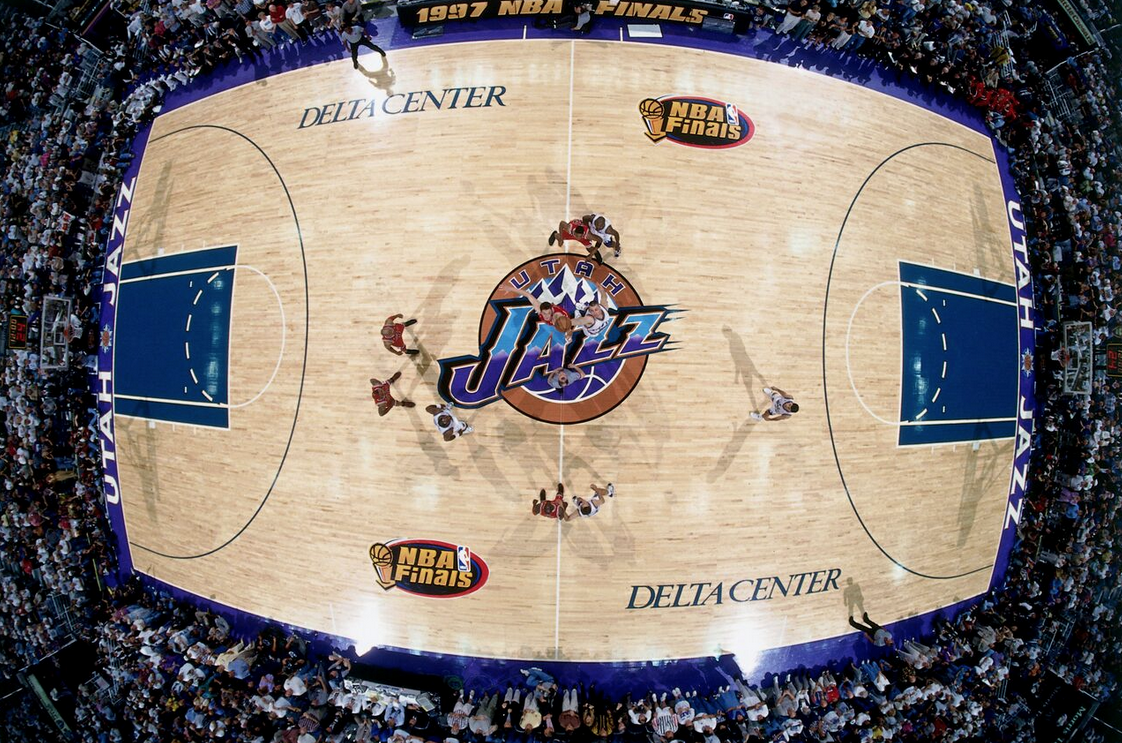
In 1993, the Utah Jazz hosted the NBA All-Star Game in Salt Lake City. Team President Randy Rigby recalls a special moment that not only brought players together, but also families and the community.
“I will always remember seeing the arena packed with not only NBA fans, but Jazz fans as well. At the end of the game, John and Karl (Malone) were holding up the co-MVP trophy with their small children in tow,” Rigby said. “This moment captured the spirit of Salt Lake and created an iconic memory for not only the Jazz basketball family, but for this community, which prides itself on being so family friendly as well.”
During the 2002 Olympic Winter Games, the venue was renamed the Salt Lake Ice Center, for the Games. The surprise gold-medal figure skating performance of American Sarah Hughes and the double-medal breakout of Apolo Anton Ohno in short track speed skating are among the many signature sports moments at the arena.

“Taking over the venue for 20 plus days in the middle of the NBA season was a remarkable feat. Without the generosity of Larry and Gail Miller, we would have not been able to make it happen,’” recalls Lori Kun, the sport manager for the Salt Lake Organizing Committee. “Many of the arena’s guest services staff, including greeters, ushers, and ticket takers volunteered their time for this once-in-a-lifetime experience. Larry personally spoke at our volunteer training session and it was incredibly emotional and inspirational for us all.”
Since the arena’s opening in 1991, 22 new facilities have been built around the league for NBA teams. Only six NBA arenas currently in use by the Golden State Warriors (1966), New York Knicks (1968), Milwaukee Bucks (1988), Sacramento Kings (1988), Detroit Pistons (1988) and Minnesota Timberwolves (1990) are older than the home of the Utah Jazz. Each of these franchises is in the process of building a new arena or implementing a significant renovation plan.
In the last five years, about $25 million has been invested into EnergySolutions Arena. With an emphasis on enhancing the fan experience, upgrades include an improved public address system, enlarged concourse entries with retail and food offerings, digital direction and concessions signage, the addition of the Legends Club, two Fanzz stores and the expansion of the main team store, and numerous energy efficiency projects. The most significant improvement was a $15 million investment prior to the 2013-14 season for the installation of a new high definition video display system and other building infrastructure. Appearing bigger than life, the center court video boards are seven times larger than their predecessor with twin, 42-foot-by-24-foot screens that run the length of the court.
The defining characteristic that brings the building its national renown is its sheer volume during Utah Jazz home games. Rigby notes, “The Jazz have a passionate and knowledgeable fan base that gives us a homecourt advantage. We have an enduring relationship with the community and sincerely appreciate the loyalty, enthusiasm and support of our fans.”
For nearly 25 years, it has been a shared experience with the community. The presence of the downtown arena has contributed to the economic vitality of the region, improved the quality of life through world-class entertainment and rallied citizens through the fandom of sports. With its 7.6 million pounds of rebar and more than 80,000 square feet of glass, the arena still has a personality that brings bright eyes and big smiles to its visitors of all ages.


